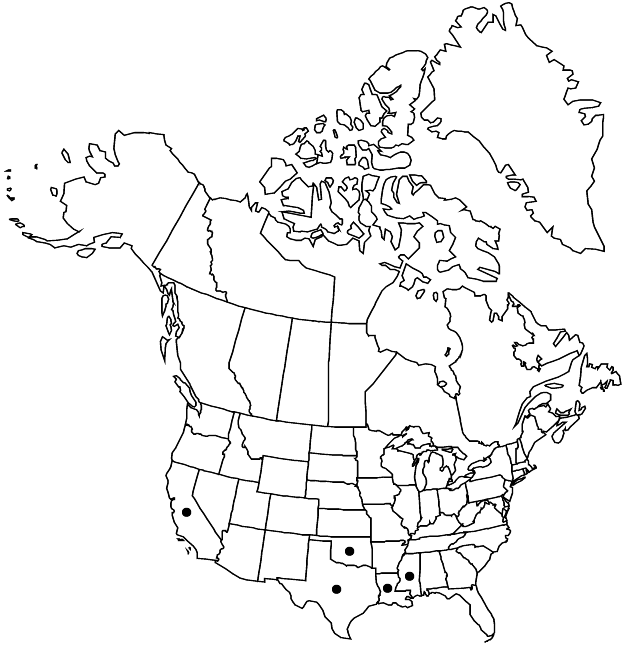Petrorhagia dubia
Anales Jard. Bot. Madrid 45: 363. 1988.
Plants annual. Stems erect, simple or branched, (9.5–)25–40(–91) cm; internodes glabrous or mid-stem ones densely stipitate-glandular. Leaves: sheath (3–)4–9 mm, 2–3 times as long as wide; blade 3-veined, linear to oblanceolate, 10–60 mm, margins scabrous. Inflorescences capitate; inflorescence bracts and involucel bracetoles enclosing flowers, broadly ovate, brown-scarious, apex mucronate. Pedicels 0.1–3 mm. Flowers: sepals (8–)12–15 mm; petals pink or purplish, primary veins 3, (3–)5–6 veins darkly colored near base of blade, apex 2-fid, sometimes obcordate. Seeds helmet-shaped, 1–1.4 mm, covered with conical papillae. 2n = 30 (Europe).
Phenology: Flowering spring–early summer.
Habitat: Roadsides, woodland savannas
Elevation: 0-1800 m
Distribution

Calif., La., Miss., Okla., Tex., Europe (Mediterranean region), Africa, introduced in South America, Africa (Republic of South Africa), Australia.
Discussion
All material of Petrorhagia dubia from California, where it appears to be have been introduced in the Sierra Nevada foothills in the 1920s, and one population from northeastern Texas, have stipitate-glandular internodes. The presence of glabrous internodes in the Louisiana, Mississippi, Oklahoma, and most Texas populations (where it was first seen along roadsides in 1967) led to early confusion with P. prolifera. This suggests that these populations were derived from seed that came from Italy or Sicily, the only area in the native range where plants with glabrous stems are known. Roadside planting of either Italian rye grass [Lolium perenne Linnaeus var. italicum (A. Braun) Parnell] or crimson clover (Trifolium incarnatum Linnaeus) in Texas is the likely source of P. dubia in that region.
Selected References
None.